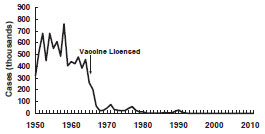
I saw on Facebook today some repeats of a CBS article from Atlanta entitled “Study: 70 Percent Of Americans On Prescription Drugs” [1]. The news article cites this actual scientific article from the Mayo Clinic’s “Mayo Clinic Proceedings,” entitled “Age and Sex Patterns of Drug Prescribing in a Defined American Population” [2].
The CBS article claims right in the first paragraph of their story that
“Researchers find that nearly 70 percent of Americans are on at least one prescription drug, and more than half receive at least two prescriptions.” [1]
This is demonstrably a false statement, as reading the abstract of the paper will tell you:
“Objective: To describe the age and sex patterns of drug prescribing in Olmsted County, Minnesota.” [2]
So, the authors say NOTHING of how many generic Americans are taking at least 1 prescription drug. Later on, at the very end of the paper they note that
“In general, drug-prescribing patterns in this population are consistent with those in previous population-based studies in the United States . . . Our findings cannot be compared directly with findings from these previous studies because of differences in methods (weekly or monthly use vs annual use and data derived from drug prescriptions vs self-reports, pharmacy records, or insurance claims).” [2]
but that is about the grandest statement they make. They don’t note that the data is anomalous with expectations based on drugs prescribed to certain age classes, etc. They report this as data-gathering to help inform healthcare system studies, but they don’t consider these numbers representative of “abuse.”
The CBS article also makes the outcomes of the study sound horrible by using the weasel word, “prescription drug,” but when you read the data breakdown in the paper the numbers actually make a lot of sense and, if anything, reflect the current trend toward obesity in the United States (in other words, then negative connotations of the paper are more aligned with a known underlying health problem in the U.S. whose symptoms can be treated with a range of prescription drugs).
Taking all age groups together:
- 26% are taking an antibiotic or erythromycin of some kind – not a surprise, since bacterial infections are common and this is how they are treated.
- 11% are taking vaccines of some kind. That’s great news!
- 10% are taking anti-asthmatics – again, not a surprise, since asthma affects an estimated 7% of the U.S. population and anti-asthmatics can be used to treat other related diseases [3]. So these numbers are in-line with the affected population.
- 9% are taking anti-infective/anti-inflammatory drugs – that’s good. Preventing inflammation and infection are not bad things, and thank goodness we have drugs to help control these issues.
- 6% are taking drugs (throat and nasal agents) that would be used to treat symptoms or complications associated with nose, chest, or throat infections (e.g. flu, severe cold, etc.). No surprise there. For instance, the percentage of people that get the flu each year varies between 6-20% [4].
- 14% are taking drugs for digestive reasons (laxative, etc.).
- 7% are taking diuretics, which are used in the treatment of heart, kidney, and other problems – the most heavily using sub-population of these was people over 50 . . . so not a surprise, because that’s when heart, liver, and kidney problems begin to crop up.
A few other categories had 5% or fewer usage, but they are all explainable for a variety of diseases that are common in sub-populations.
The ones to watch out for are the fraction on medications intended to treat blood pressure or heart issues, or depression:
- 11% take anti-lipemic agents, chemicals designed to lower cholesterol
- 7% take beta-blockers and 7% take ACE inhibitors, which help treat heart and blood pressure issues
- 13% take anti-depressents
- 12% take opioid analgesics, which can be habit-forming (which is why they are given on prescription, of course)
Let’s consider the 11% who take anti-cholesterol drugs and the 14% that take a drug intended to treat the heart in some way. About 1/3 of the U.S. adult population is obese [5], and obesity raises your risk factors for heart and cholesterol-related problems (I myself have struggled with high blood pressure, which is very well-controlled by keeping my BMI below 30 . . . but that is just me, and should not be mistaken for the actual copious medical evidence that obesity increases significantly all the risks to your heart and lungs). So it’s not a huge surprise that a non-trivial fraction of the population takes drugs to control problems associated with one of the largest health issues facing our nation. If anything, it’s worth focusing on the obesity issue and less on the drugs issue, which is more a symptom than a cause.
The other concerning issue is the number of people taking anti-depressents, but . . . again . . . taking anti-depressants is a response to the underlying cause:
An estimated 26.2 percent of Americans ages 18 and older — about one in four adults — suffer from a diagnosable mental disorder in a given year. [6]
We’ve gotten better at identifying how behaviors are related to the chemistry of the mind, and especially to depression and related classes of mental state. Right now, effective treatments for many people involve drugs. Perhaps, in the future, we’ll find other ways to control depression, but the reality is that now we have classes of drugs that can have positive effects on people fighting with depression.
All of the numbers simply reflect the fact that we know how to treat a lot of disease classes using drugs, and so drugs get prescribed. Keep in mind, again, that CBS blew their reporting on this article in the first line of their story, when they said it applied to all Americans. Wrong. Just wrong.
[2] http://www.mayoclinicproceedings.org/webfiles/images/journals/jmcp/jmcp_ft88_7_2.pdf
[3] Fanta CH (March 2009). “Asthma”. New England Journal of Medicine 360 (10): 1002–14. doi:10.1056/NEJMra0804579. PMID 19264689
[4] http://www.webmd.com/cold-and-flu/flu-statistics


